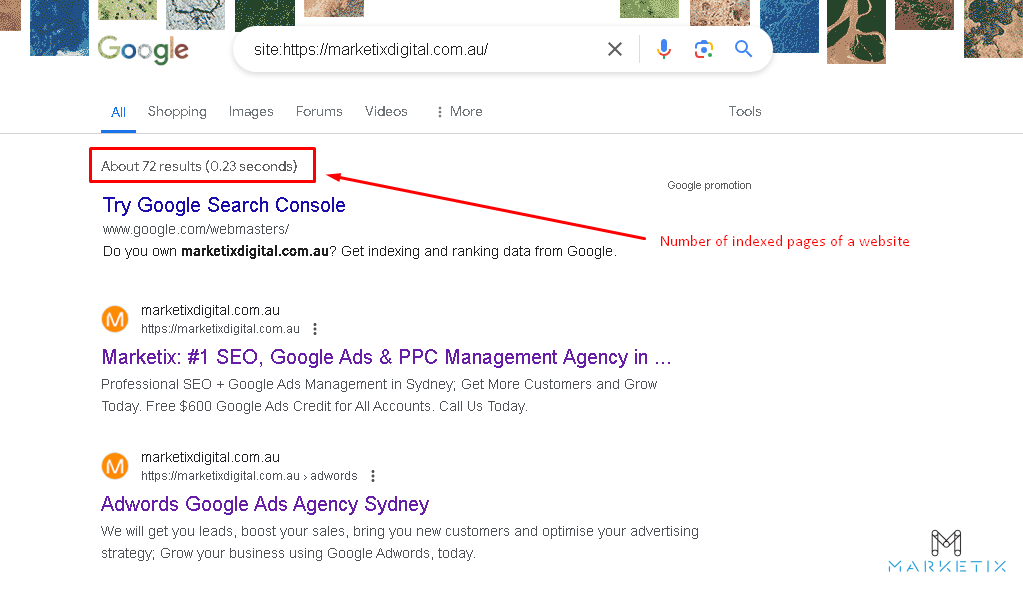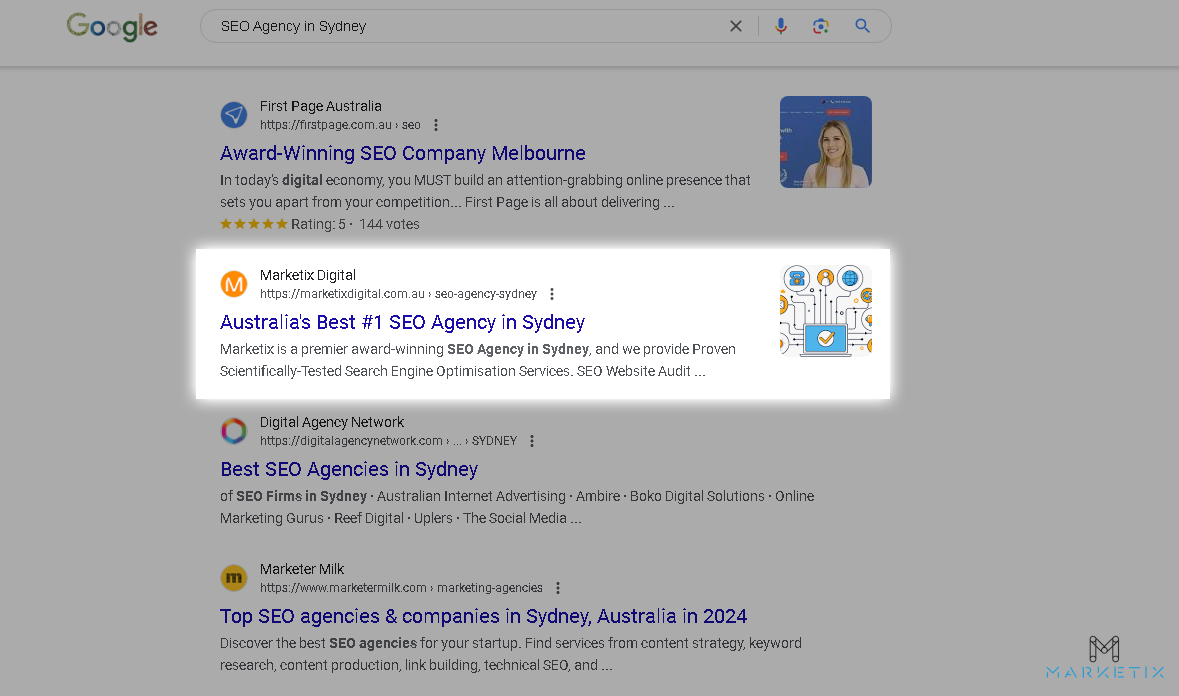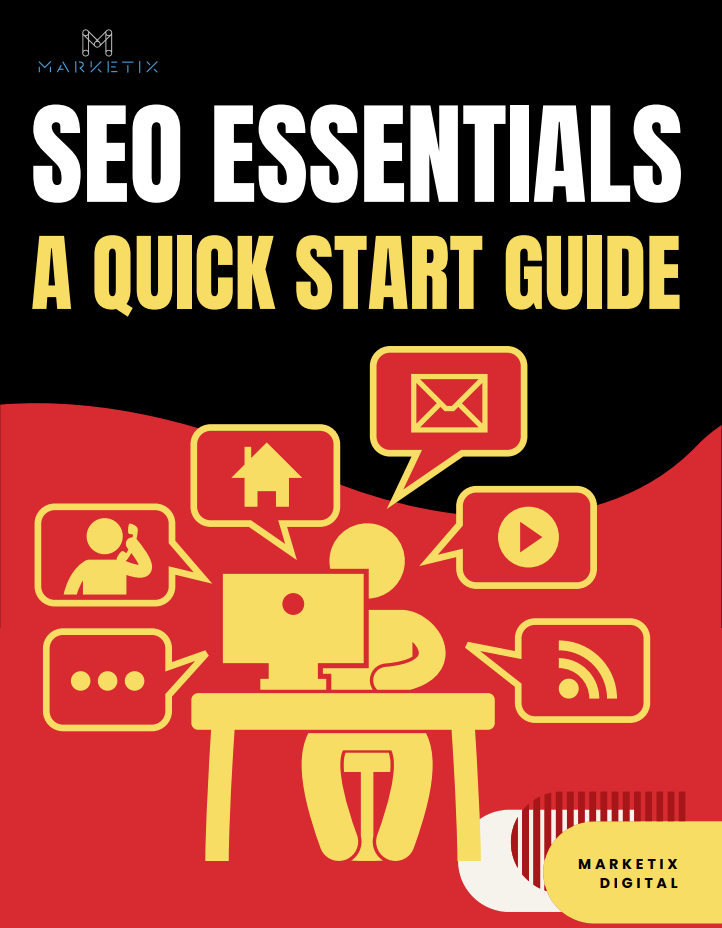- Home
- > The Marketix Blog
- > SEO
10 Critical SEO KPIs for B2B Marketing

As a B2B company assessing your SEO KPIs and metrics, it's vital to understand the importance of executing an effective SEO campaign. By measuring the correct KPIs and metrics, your business and executives gain actionable data, enhancing the effectiveness of your SEO strategies.
Failing to actively measure these can result in losing market share to competitors.
As a leading Enterprise SEO Agency in Australia, Marketix specialises in crucial B2B KPIs that deliver true value and are essential for assessing your campaign’s success.
This guide will outline the 10 critical SEO KPIs for B2B marketing that have propelled our clients to new heights.
Important SEO KPIs for B2B Marketing
B2B websites typically have longer lead times than either B2C service, or eCommerce B2C websites.
The regular user will first visit the site to educate themselves before taking action. Then they'll usually go consult internally with a company decision-maker and stakeholders to approve any transaction.
Here are the top 10 KPIs and metrics that should be analysed and used as KPIs for B2B websites.
Indexation
One of our first tasks when evaluating your various KPIs is to check your indexation. This shows the number (and ratio) of existing pages that can be found on Google. Keeping an eye on this figure will allow you to determine if Google has found any issues with your website or pages.
Additionally, you want to make sure that no technical errors are preventing Google from either crawling or understanding the context behind the pages of your website.
In our experience, many websites, despite having high-quality content, still face significant challenges with indexability. For instance, some of the websites we've handled previously had excellent content published but were hindered by technical oversights such as improper use of tags or incorrectly configured robots.txt files that unintentionally blocked search engines from accessing key pages. This not only reduced their visibility but also limited their potential to attract and engage their target audience.

By performing a thorough review and correction of these technical elements, we were able to resolve these issues, allowing Google to properly index the pages and significantly improve the site's overall search performance. It's important to make sure that all parts of your website are accessible to search engines to fully leverage the quality of your content.
This area falls under technical SEO, which is to ensure that Google understands the technical architecture of your website and can effectively crawl your website.
Your SEO efforts will only be effective if Google recognises, indexes, and lists the pages of your website. Whether it's for B2B or any other kind of business, checking your indexation is a crucial starting variable to work with.
Website Visitors via Organic Traffic
The term "organic visits" refers to visits that originate from search engines.
Providing your audience with relevant and high-quality content helps to ensure that your organic SEO generates more clicks. It also increases your website's credibility and authority in the eyes of Google. This also means that users will find you more frequently as they search for a range of keywords.
“Take the example of one of our clients, a company that supplies custom uniforms to businesses. Initially, they faced challenges in attracting significant organic traffic, which was important for increasing their market penetration. Our analysis identified a gap in how their target customers were searching for custom uniform providers and how the company's website content was structured.
By revising their content to focus on key phrases commonly used by their prospective customers, such as "customised uniforms for [industry]" and "custom workwear solutions," we tailored their SEO strategy to better meet search demands. We also enhanced the content's relevance and richness by adding useful guides on choosing the right uniforms for different business types and occasions.
As a result, within a few months, the company saw a substantial increase in organic traffic, with a notable improvement in user engagement and inquiries. This growth not only validated the effectiveness of targeted SEO practices but also positioned the company as a top choice for business uniform needs in their industry.
This example demonstrates how precise alignment between content and user search intent can significantly boost organic traffic and, by extension, business growth. It’s essential for businesses to continuously refine their SEO strategies to captivate and convert their ideal customer base.”
Needless to say, if you're receiving zero organic search hits, your search engine optimisation efforts are failing.
Impressions
Page impressions indicate how frequently your website and its subpages are visited. When a browser requests a website, the server sends the corresponding HTML document. This action records the visit as a page impression in the server's log file.
Page impressions are important because they indicate how appealing your website is to your visitors. Companies can then use this key figure to determine which pages to advertise on or to place key conversion calls to action. Page impressions also reveal which channels visitors use to reach your page, indicating specific optimisation opportunities.
Click-Through Rate (CTR)
SEO entails much more than simply having your website rank higher in the SERPs (search engine ranking position). The ultimate goal is to drive as much relevant organic traffic as possible to your website. Your click-through rate, or CTR, informs you about the performance of your SERP-ranking pages.
Measuring the CTR of your ranking pages will tell you how many people visited them out of the total number of SERP users searching for a given query.
Conversions / Leads Generated
Any time a website visitor takes the next step toward becoming a client, that is a conversion. It usually happens when someone fills out a form on your website, gives you their contact information, and becomes a lead or MQL.
Your conversion rate is usually the same as the number of leads that your website generates.
Conversion Rate Per Page
Your conversion rate is the percentage of visitors who convert after visiting your website. To calculate that percentage, your analytics software examines the total number of visitors to your site over a specified period. This total is then divided by the number of conversions on your site.
This gives you the overall conversion rate of your website. Individual pages will have different conversion rates, and your site's overall conversion rate is an average of all of your pages.
Your conversion rate indicates whether your website is effectively generating new leads and tracking them on a per-page basis this allows you to improve your conversion rates for core commercial pages.
Keywords by Intent (Commercial / Informational / Transactional / Navigational)
The keyword intent represents the user's search intent. It's what a user is likely to do when looking for a specific phrase. Whilst we cannot always be certain, we can build assumptions on the intention.
The intent of a keyword can be split into 4 categories, according to SEMrush:
- Informational keywords — searchers looking for an answer to a specific question or general information.
- Navigational keywords — searchers intending to find a specific site or page.
- Commercial keywords — searchers looking to investigate brands or services.
- Transactional keywords — searchers intending to complete an action or purchase.
Informational intent: This type of intent is often associated with keywords that people use when they are looking for information or answers to a specific question. For example, someone might search for the keyword "how to bake a cake" with the intent of learning how to make a cake.
Navigational intent: This type of intent is often associated with keywords that people use when they are looking for a specific website or web page. For example, someone might search for the keyword "Facebook" with the intent of finding the Facebook homepage, or "Google Search Console documentation" with the intent of finding GSC documentation to help analyse their search data.
Transactional intent: This type of intent is often associated with keywords that people use when they are looking to make a purchase or take some other specific action. For example, someone might search for the keyword "buy laptop online" with the intent of purchasing a laptop from an online retailer.
Local intent: This type of intent is often associated with keywords that include a location, such as a city or region. For example, someone might search for the keyword "IT security consultant near me" with the intent of finding a local IT security consultant that comes on-site.
Commercial intent: This type of intent is often associated with keywords that people use when they are considering making a purchase but are not yet ready to commit. For example, someone might search for the keyword "best laptop for businesses" with the intent of learning more about different laptop options before making a decision.
It is also possible for the intent of a keyword to belong to multiple categories.
When it comes to keyword research, keyword intent is without a doubt the most important concept. It enables you to better meet your users' needs and align your content and landing pages with their intentions so you can have the desired outcome; whether that is a conversion at the bottom of your funnel, or an educational piece (like this one) to build trust in your brand.
Keywords by Ranking
Keyword Ranking shows how well (or badly) your target keywords rank in the search engine result positions. The higher the ranking, the more visitors the website receives. This will bring you much closer to your other goals, such as traffic, conversions, MQLs, and leads.

This key performance indicator is directly related to the success of your SEO campaign. It informs you whether or not your relevant main keyword is ranking. The goal should be to rank on the first page for your given keywords and in the best case, the top 3 SERP positions.
Bounce Rate
Your bounce rate is a measure of how frequently visitors to your site leave after only viewing one page. A high bounce rate may be a sign of several issues, including poor site design, lengthy load times, or uninteresting and irrelevant content that is missing the mark.
While a 100% bounce rate is bad for an online store, it is meaningless for a blog. After all, an article can be read without clicking through to another page; unless you are using closely related internal links that will guide users through to other relevant pages that will capture your audience.
MQLs / Opportunities Generated Value (most important for executives to understand)
A Marketing Qualified Lead, also known as an MQL, is a website visitor whose level of engagement indicates that they are likely to become a customer.
A lead might have read your blog posts, read feature pages, downloaded content, reviewed your customer case studies, and visited your pricing page. These events qualify the visitor as an MQL, and therefore your sales team can and should now engage with the visitor promptly.
Get in Touch with the SEO Experts at Marketix
The significance of individual b2b SEO KPIs can shift as the Google algorithm evolves, and you must constantly keep up to date with these important changes.
Our SEO experts can assist you in developing a strategy to keep your B2B business relevant and competitive in today's market.
Our team can help you understand and benchmark your current B2B KPI metrics against industry standards.
We’d love to help, get in touch with Marketix today.

Free Download SEO Book
Download our 24-page SEO book to learn:
- How SEO Really Works
- How to Rank #1
- Content & SEO
- Choosing an SEO Agency
Thank you!
You have successfully joined our subscriber list.






